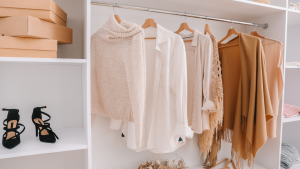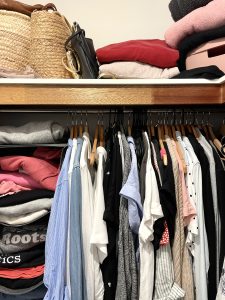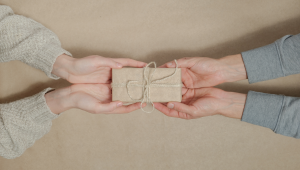My First Week of ‘No Buy January’ Made Me Realise I MIGHT Have a Spending Problem
Annoyed with my own spending, I started a No-spend Challenge month
The no-spend challenge was simple: buy only what’s absolutely necessary for a whole month. Eagerly, I embraced my self-declared ‘No Buy January’, naively confident that skipping a few coffees and impromptu shopping sprees would be a breeze.
It turned out to be an eye-opening confrontation with my reckless spending habits, which, up until now, I had blissfully ignored. It didn’t take long to realise that my default activity when bored was shopping. And my bank statements were proof.
In just the previous month, I had spent nearly $600 on clothes, over $100 on mani/pedis, and a whopping $110 on takeaway coffees, amounting to a horrifying realisation that this frivolous spending cost me an extra $800. Money I could’ve spent on a weekend getaway or added to my savings account.
It was time to figure out how to stop spending money in such a careless way. It was time for a no-spend challenge.

Why a no-spend challenge?
This challenge, sometimes also called a spending fast, is where you actively stop any unnecessary spending for a set period of time. The goal is usually to curb impulse purchases, save more money, help you get out of debt, or become more aware of your financial behaviour.
After seeing my spending habits in black and white, I created a list of ‘no-buy’ rules for myself.
For the whole month, I would not spend any money on:
- manicures and pedicures
- take away coffee
- clothes or shoes
- restaurants
- beauty products
The plan? 1) Stop spending money on things I do not need and 2) Stay away from the places that encourage my impulse spending.
The memories of all the unnecessary spending
Spending less time shopping and making impulse purchases meant I had ample opportunity to reflect on the times I had spent so recklessly in the past. I remembered the time my flight was delayed. Bored, I impulsively bought two overpriced tops at the airport, neither of which I needed nor could fit in my jam-packed suitcase.
Or that time I bought a black leather backpack at 60% off, despite preferring brown and already owning three. I convinced myself it was a fantastic deal that I’d be stupid to pass up. I revelled in the satisfaction of that ‘deal’ for days.
Then there was my daily drive-through coffee stop. At a steep $5.60 for a large cappuccino, you’d think alarm bells would be going off. But nope. I justified my daily cuppa as my ‘reward’ for hitting the gym at 6 am. Were there worse ways to spend my money? Possibly. But that didn’t justify my daily spend.
How have I reached the point where I could rationalise away this reckless spending without a second thought?

My naive belief that I’d just breeze through this challenge quickly morphed into a mix of guilt and shame. Acknowledging how deeply rooted my shopping habit was and how much I had underestimated my spending was a wake-up call.
James Clear, author of Atomic Habits and an expert in creating new habits and self-improvement, says, “If you’re serious about getting better at something, then one of the first steps is to know—in black-and-white terms—where you stand. You need self-awareness before you can achieve self-improvement.”
The first step is admitting it
Heeding these wise words, I dedicated the first week of January to observing my impulsive mall escapes and my insatiable desire for the next great deal. I was determined to outwit myself and replace this out-of-control habit with healthier, far less expensive habits.
I began noticing my automatic urge to ‘just wander’ through shops or how my car seemed to automatically veer left towards the coffee shop instead of right towards home. In each instance, I took note of how I was feeling and tried to get to the root of why I wanted to engage in this spending behaviour, painfully aware of the guilt that inevitably followed.
Was I actually bored? Or was I looking for that quick rush that comes from indulging in something I know I shouldn’t?
Now, instead of looking for that dopamine hit from spending, I focus on healthier habits that require no money. When the urge hits, I journal about my 2024 goals, meditate, go for a walk, listen to a podcast, and even dive into a deep clean.
Just one week into the new year, I’m proud of myself for what I’ve accomplished. Admitting to myself how much I’ve been spending was a bit embarrassing, but it’s opened the door to a much-needed change. As it turns out, I may have missed the ultimate dopamine hit this whole time. The rush of self-control and more mindful choices just might be the new thrill I’ve been looking for.






